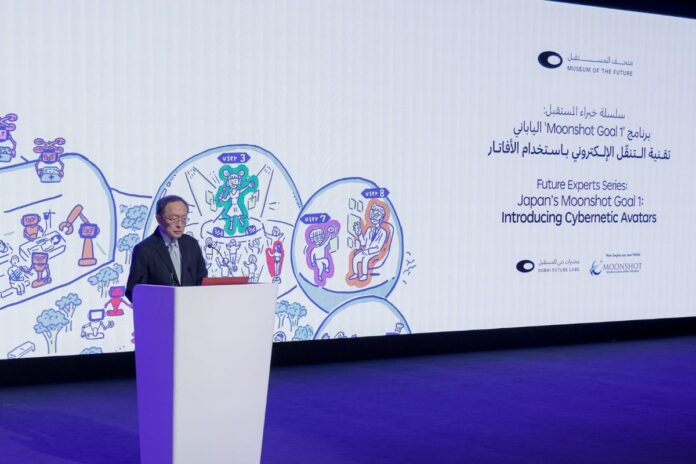Humans could have robotic digital twins in the future that do our work and tasks on our behalf, allowing us to socialize more freely.
That was one prediction made during the ‘Moonshot Goal1introducing Cybernetic Avatars’ lecture session, which took place at Dubai’s Museum of the Future.
The session brought together science and technology experts from Japan and the UAE together as part of a collaboration between Dubai Future Foundation’s Dubai Future Labs and the Japan Science and Technology Agency to explore the intersection between reality and the Metaverse via robotics, giving us a peek into what remote work may look like in 2050.
The lectures were delivered by 4 experts from prominent Japanese universities who took part in the Moonshot Goal 1 program of the Japan Science and Technology Agency – which emphasizes the realization of a society in which human beings can be free from limitations of body, brain, space, and time by 2050.
The program aims to support innovative ideas and research projects aimed at preparing societies for digital futures so they can develop the infrastructure and deploy the advanced technologies that will enable the potential of conducting social activities virtually by 2050.
Among the opportunities discussed during the sessions were the possibility of robots becoming digital twins of humans and being able to carry out work and tasks instead of them, more accurately and quickly.
Khalifa Al Qama, Director of Dubai Future Labs, said:
“Promoting research and development in cooperation with various scientific, technological and research institutions at the local and international levels is critical to anticipating future opportunities and transforming innovative ideas into real solutions for a better future for humanity.
“This event aligns with Dubai Future Foundation’s efforts to identify the most important opportunities and upcoming technological transformations, and to exchange experiences, best practices and knowledge about the best ways for societies to benefit from future technology.”
Coexisting Between the Digital and Real World
In the first talk, Dr. Norihiro Hagita, Program Director, and Professor, Osaka University of Arts presented the main goals of the Moonshot Goal 1 program, which includes 7 research projects focused on developing a variety of cybernetic avatars to enable individuals to actively participate in the development of their societies, considering ethical, economic, environmental, legal and social factors.
Hiroshi Ishiguro, Project Manager, and Professor, Osaka University, said during the second lecture:
“Our lives will change drastically by 2050, and we will have greater freedom in choosing our location and how we spend our time participating in various activities such as work, education, medical care and daily life. We aim to develop levels of digital and real coexistence in a balanced manner.”
Junichi Ushiba, Deputy Project Manager, and Professor, Keio University spoke about promising technologies for analyzing brain activities and body language to predict human interactions and behaviors, helping to develop the world of virtual reality.
Kouta Minamizawa, Project Manager, and Professor, Keio University noted during the final lecture that the Moonshot Goal 1 program aims to help people make full use of their abilities and share their skills and experiences with others to promote joint innovation.
News Source: Dubai Media Office
